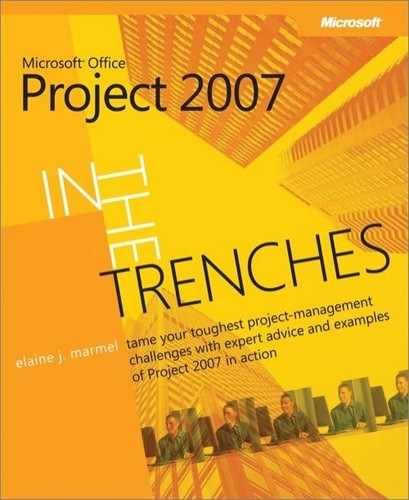PROJECT PLANNING has been around longer than any of us can remember; one might speculate that project planning began when groups of people first started living together, making multiple resources available to do the tasks needed to live. That first project manager might have been the one who ultimately became "chief" of the group by demonstrating good management skills in "getting the job done" while best utilizing existing resources and generally making sure that everything that needed to be done got done efficiently. Project management and project managers concern themselves with scheduling, budgeting, managing resources, and tracking and reporting progress.
As we’ve progressed, project management has become a discipline made up of a variety of tools and techniques that have become "standards" after being proven successful at helping project managers achieve their goals. Initially, tools were manual; project managers made cost calculations using calculators and drew charts and diagrams by hand that represented the way a project would unfold.
Enter the computer age, and tools like Microsoft Office Project 2007 became available to remove much of the mundane work, leaving project managers to focus on the aspects of the project that require decision-making: "If I had more time, what could I accomplish?" "If I had more people, how much time could I save? And at what cost?" "How can I monitor how things are going?" "How can I show management where we are and what we need to do next?" And so on.
Project is a complicated piece of software because it can do lots of things. In addition to calculating project costs and producing the pictures that describe the project, Project can provide information to help project managers answer questions that require decision-making.
As is true with any complex piece of software, learning to use Project can seem quite daunting. And just mastering the menus doesn’t really mean you’ve learned how to use it. Project is, in many ways, a "situational" piece of software; you do certain things under certain circumstances. And the things you do are driven by the goal you want to achieve. For example, not everyone assigns resources; there are valid reasons to assign resources and not to assign resources.
This book isn’t about teaching you everything there is to know about Project; there are other books out there that focus on that. Instead, this book is about fitting Project into the stuff you need to do to manage a project, and about the results Project produces based on your actions. Sure, you’ll find "how-to" information in this book, but the focus will be on the results you get when you follow the steps.
This book helps you use Project in project management situations. It helps you select actions to take, given a particular set of circumstances. And it shows you the results of those actions, helping you to make the right choices for your situation. Will this book solve all of your problems? No. But in cases where it doesn’t, it hopefully will help you find the answers you need to make your project a success.
